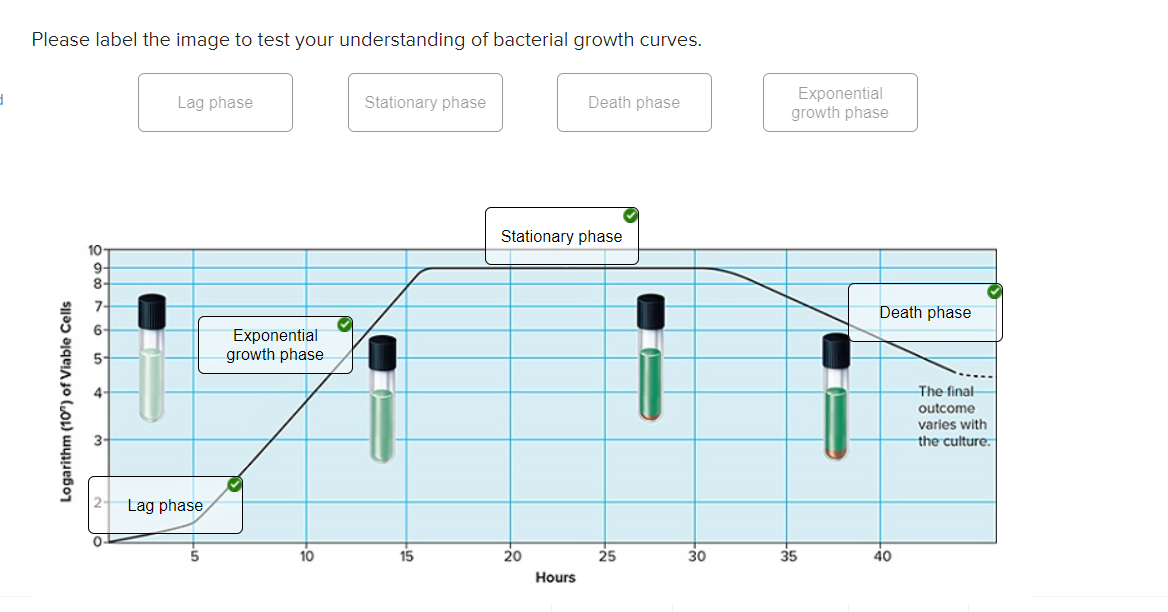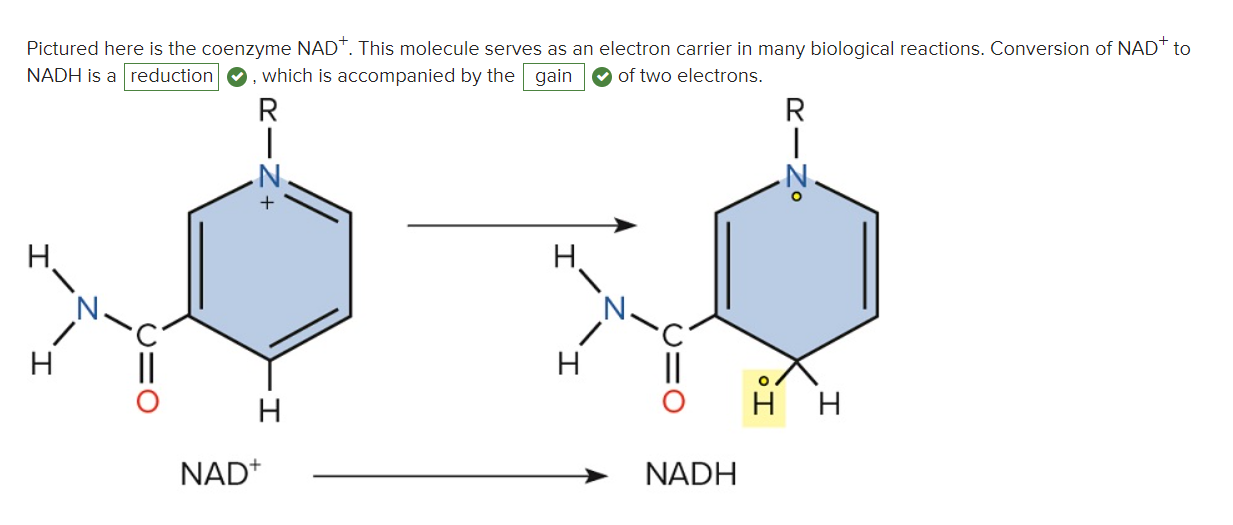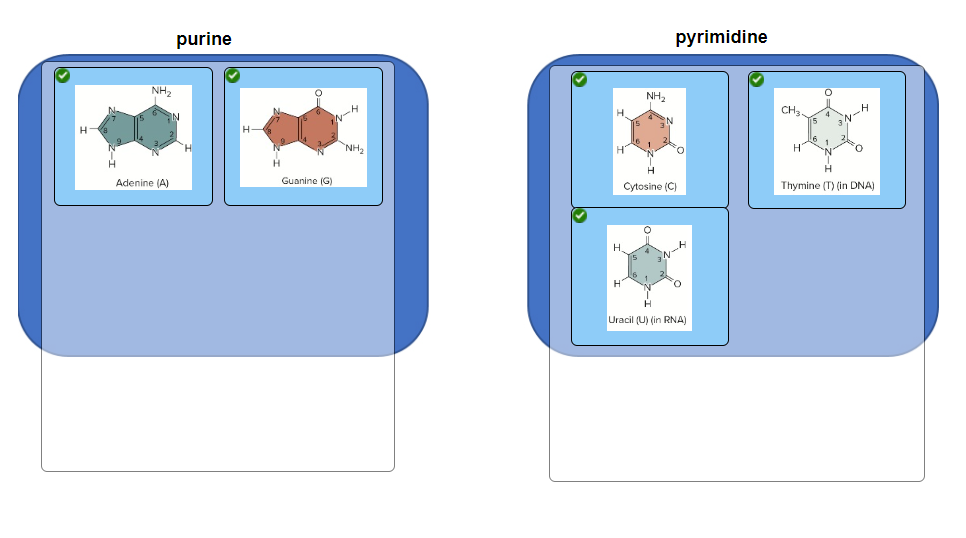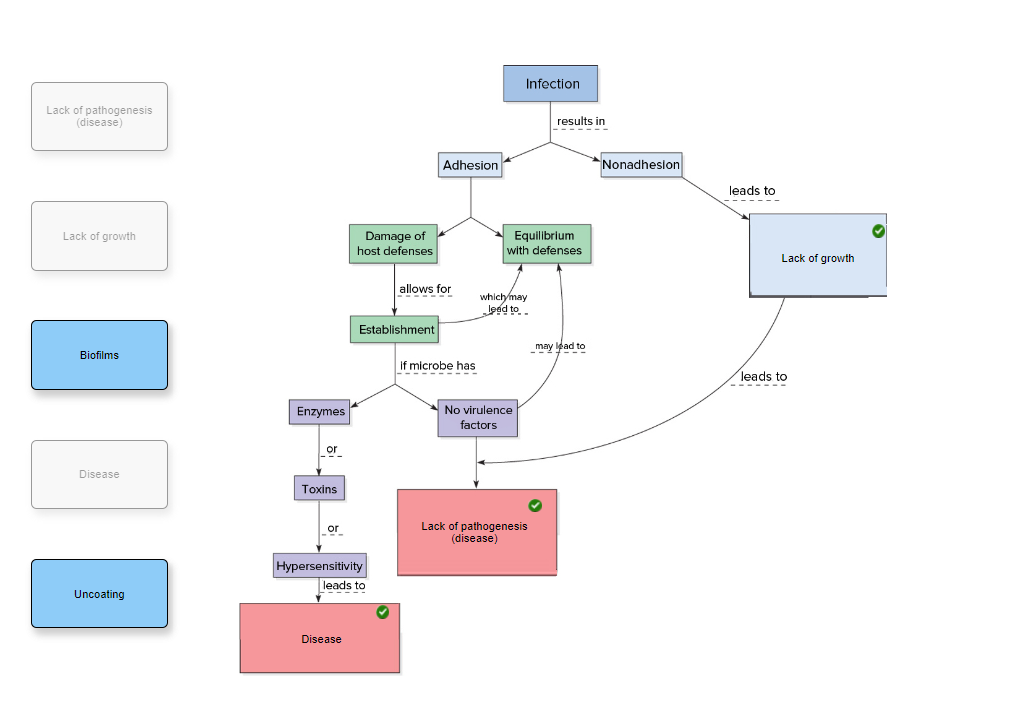Lecture Exam #2 - Microbiology
0.0(0)
0.0(0)
Card Sorting
1/112
Earn XP
Study Analytics
Name | Mastery | Learn | Test | Matching | Spaced |
|---|
No study sessions yet.
113 Terms
1
New cards
Methanogens are a type of archaea found in various habitats on the planet, including deep-sea vents in the deepest parts of the ocean. They produce methane gas by reducing carbon dioxide, using hydrogen gas under anaerobic conditions. Given these characteristics, methanogens are a type of __________.
chemoautotroph
2
New cards
Which of the following elements are NOT one of the six elements found in lipids, nucleic acids, and proteins?
\
* carbon
* oxygen
* potassium
* phosphorus
* calcium
* iron
* nitrogen
* hydrogen
* sulfur
\
* carbon
* oxygen
* potassium
* phosphorus
* calcium
* iron
* nitrogen
* hydrogen
* sulfur
* potassium
* calcium
* iron
* calcium
* iron
3
New cards
Osmosis is best defined as the movement of
water molecules across a membrane from an area of high water concentration to an area of lower concentration.
4
New cards
Which of the following will pass through a cell membrane most easily?
\
* large nonpolar molecules
* large neutral molecules
* small polar molecules
* small nonpolar molecules
* large polar molecules
\
* large nonpolar molecules
* large neutral molecules
* small polar molecules
* small nonpolar molecules
* large polar molecules
* small nonpolar molecules
5
New cards
Bacteria found in the stomach of cud-chewing mammals, such as cows, are essential in the breakdown of cellulose. This relationship is an example of __________.
endosymbiosis
6
New cards
The *general* term used to denote a situation in which two organisms live together in a close partnership required by one or both members is __________.
symbiosis
7
New cards
What type(s) of organisms were found growing in the Berkeley Pit?
* bacteria
* single-celled eukaryotes
* fungi
* All of these choices are correct.
* bacteria
* single-celled eukaryotes
* fungi
* All of these choices are correct.
* All of these choices are correct.
8
New cards
Approximately how many different species of prokaryotes and eukaryotes were found living in the Berkeley Pit?
100
9
New cards
An acidophile lives in what pH environment?
pH 0–6
10
New cards
True or false: Extremophiles only include the bacteria and the archeons.
False
11
New cards
Extremophiles are able to live in toxic environments due to
evolution of genetic traits
12
New cards
What evolutionary changes did the organisms make to survive in the toxic environment of the Berkeley Pit?
* modified cell membranes
* modified enzymes
* produced protective biofilms
* All of these choices are correct.
* modified cell membranes
* modified enzymes
* produced protective biofilms
* All of these choices are correct.
* All of these choices are correct.
13
New cards
The cell wall of a bacterial cell
prevents lysis of the cell in hypotonic conditions
14
New cards
Nutrient molecules that contain the basic framework of carbon and hydrogen are called __________ nutrients.
organic
15
New cards
The use of concentrated salt or sugar solutions as food preservatives creates a __________ environment, which inhibits bacterial growth.
hypertonic
16
New cards
The FtsZ protein is needed to form the __________.
septum
17
New cards
The energy source for contraction of the FtsZ ring during cell division comes from __________.
the hydrolysis of GTP
18
New cards
Which enzyme is *NOT* involved in DNA replication?
* DNA polymerase
* gyrase
* RNA polymerase
* helicase \n
* DNA polymerase
* gyrase
* RNA polymerase
* helicase \n
* RNA polymerase
19
New cards
Cells cannot begin a new round of replication until they have completely finished dividing.
False
20
New cards
Most cultured bacteria tend to multiply by
binary fission
21
New cards
Cell division is triggered exclusively when cells attain a threshold mass.
False
22
New cards
DNA helicase is responsible for adding nucleotides to the growing end of the DNA.
False
23
New cards
Differences in the bacteria found in the GI tract of humans compared to those found in the GI tract of primates is most likely an example of __________.
coevolution
24
New cards
Please label the image to test your understanding of bacterial growth curves.

25
New cards
carbon
product of respiration and used in photosynthesis
26
New cards
oxygen
necessary for the metabolism of nutrients by aerobes; significant element in organic compounds and inorganic compounds
27
New cards
potassium
plays a role in protein synthesis and membrane transport
28
New cards
phosphorus
key component of genetic material in cells
29
New cards
calcium
stabilizes cell walls, and adds resistance to bacterial endospores
30
New cards
iron
essential element for the structure of new respiratory proteins
31
New cards
chemoautotroph
4H2 + CO2 -> CH4 + 2H2O
32
New cards
photoautotroph
CO2 + H2O -> (CH2O)n + O2
33
New cards
chemoheterotroph
C6H12O6 + 6O2 -> 6CO2 + 6H2O + ATP
34
New cards
Rank the following components from least to most abundant.
lipids
nucleic acids
proteins
water
nucleic acids
proteins
water
35
New cards
An enzyme promotes a reaction by serving as a physical site upon which the reactant molecules, called __________, can be positioned for various interactions.
substrates
36
New cards
__________ inhibition occurs when the inhibitor molecule is contending with the substrate for the binding site.
Competitive
37
New cards
Which of the following are correct descriptions of biological oxidation-reduction reactions?
* The compound that loses electrons is oxidized.
* The compound that loses electrons is reduced.
* The compound that gains electrons is oxidized.
* The compound that gains electrons is reduced.
* The compound that loses electrons is oxidized.
* The compound that loses electrons is reduced.
* The compound that gains electrons is oxidized.
* The compound that gains electrons is reduced.
* The compound that loses electrons is oxidized.
* The compound that gains electrons is reduced.
* The compound that gains electrons is reduced.
38
New cards
Please select all of the structural components of ATP.
\
* 5-carbon ribose sugar
* chain of two phosphate groups
* chain of three phosphate groups
* adenine
* guanine
\
* 5-carbon ribose sugar
* chain of two phosphate groups
* chain of three phosphate groups
* adenine
* guanine
* 5-carbon ribose sugar
* chain of three phosphate groups
* adenine
* chain of three phosphate groups
* adenine
39
New cards
_____________ refers only to energy-requiring processes that result in synthesis of cell molecules and structures.
Anabolism
40
New cards
Which of the following is *NOT* a catabolic process?
* hydrolysis of ATP
* photosynthesis
* fermentation
* glycolysis \n
* hydrolysis of ATP
* photosynthesis
* fermentation
* glycolysis \n
* photosynthesis
41
New cards
The Krebs cycle occurs after _________.
glycolysis
42
New cards
The NADH involved in the electron transport chain is made
by oxidation reactions in glycolysis and the Krebs cycle
43
New cards
The electron carrier proteins in the electron transport chain shuttle electrons to
a terminal acceptor
44
New cards
During the electron transport chain in bacteria, protons are
shuttled to the outside of the cell membrane
45
New cards
Coenzyme Q
transfers protons from inside the membrane to outside the membrane
46
New cards
In this reaction, ATP synthase uses energy from ______ to make ATP.
protons re-entering the cell
47
New cards
In bacteria, the electron transport chain is located
in the plasma membrane
48
New cards
The last carrier protein in the electron transport chain transfers
two electrons to oxygen
49
New cards
The electron transport chain is part of ______.
* aerobic respiration
50
New cards
An enzyme speeds up a chemical reaction in the cell, but can only be used once.
\
True or False
\
True or False
False
51
New cards
Consider the biochemical pathway:
A – E1 –> B – E2 –> C
\n Enzyme 1 can utilize
A – E1 –> B – E2 –> C
\n Enzyme 1 can utilize
only A as substrate.
52
New cards
In feedback inhibition, the inhibitor of the biochemical pathway is typically
the final product of the biochemical pathway.
53
New cards
The electron transport chain consists of a series of membrane-bound carriers that shuttle protons and electrons to NADH.
\
True or False
\
True or False
False
54
New cards
The electrons excited by sunlight are replaced by electrons from __________ in photosystem I, and by electrons from __________ in photosystem II.
photosystem II; water
55
New cards
The Calvin cycle begins by the attachment of CO2 to which of the following?
\
* RuBP
* glucose
* 3-phosphoglycerate
* glyceraldehyde 3-phosphate
\
* RuBP
* glucose
* 3-phosphoglycerate
* glyceraldehyde 3-phosphate
RuBP
56
New cards
Aerobic respiration and fermentation are similar in that they both begin with the process of __________ and they both produce ATP and __________.
glycolysis; CO2
57
New cards
Pictured here is the coenzyme NAD+. This molecule serves as an electron carrier in many biological reactions. Conversion of NAD+ to NADH is a ____________,__ which is accompanied by the __________ of two electrons.
reduction; gain

58
New cards
photophosphorylation
uses light-driven electron transport to generate ATP
59
New cards
substrate-level phosphorylation
transfer of phosphate from high-energy compound to ADP to directly generate ATP
60
New cards
oxidative phosphorylation
uses electron transport and an enzyme to generate ATP
61
New cards
Phycobilin
red and blue-green
62
New cards
Carotenoid
yellow, orange, red
63
New cards
Chlorophyll
green
64
New cards
Reactions that release energy as they proceed are called _________,__ while reactions that require energy to complete are called ___________.
exergonic; endergonic
65
New cards
After DNA replication two identical DNA molecules are formed.
\
True or False
\
True or False
True
66
New cards
In a repressible operon, excess product acts as a corepressor to increase transcription of the operon.
\
True or False
\
True or False
False
67
New cards
DNA replication begins at multiple sites on the bacterial chromosome.'
\
True or False
\
True or False
False
68
New cards
A structural gene encodes the information for a specific protein.
\
True or False
\
True or False
True
69
New cards
Which of the following is not true about transposons?
\
* They are capable of shifting from one cell to another.
* They can move into the host genome.
* They replicate themselves before moving.
* They are able to leave the host genome via a vector.
* They can move from one site in the host genome to another site.
\
* They are capable of shifting from one cell to another.
* They can move into the host genome.
* They replicate themselves before moving.
* They are able to leave the host genome via a vector.
* They can move from one site in the host genome to another site.
* They are able to leave the host genome via a vector.
70
New cards
Where does *Acinetobacter baumannii* typically live?
soil and water
71
New cards
Infections caused by *A. baumannii* have most frequently been seen in which group of people?
* soldiers returning from current battlefields
* cystic fibrosis patients on ventilators
* HIV/AIDS patients
* premature newborns
* soldiers returning from current battlefields
* cystic fibrosis patients on ventilators
* HIV/AIDS patients
* premature newborns
* soldiers returning from current battlefields
72
New cards
A “healthcare-associated” infection is an infection acquired through which means?
* water
* indirect fecal-oral transmission
* admission to a hospital for other reasons
* food contaminated with endospores \n
* water
* indirect fecal-oral transmission
* admission to a hospital for other reasons
* food contaminated with endospores \n
* admission to a hospital for other reasons
73
New cards
What was the most probable source of *A. baumannii* in this woman’s infection?
\
* urinary catheter
* ventilator tube
* colistin treatment
* hospital visitors
\
* urinary catheter
* ventilator tube
* colistin treatment
* hospital visitors
* ventilator tube
74
New cards
The strain of *A.* *baumanni* cultured late in this woman’s infection was most likely a(n) ______ strain.
XDR
75
New cards
HIV is an example of a _________,__ which uses __________ to synthesize DNA from an RNA genome template.
retrovirus; reverse transcriptase
76
New cards
One reason mutations are so problematic is that bacterial cells have no ability to repair a mutation once it has occurred.
\
T/F
\
T/F
False
77
New cards
Group the following structures into the appropriate category.

78
New cards
The __________ subunit of the ribosome is the site of peptide bond formation.
large
79
New cards
In the presence of tryptophan, transcription of the trp operon is on.
\
T/F
\
T/F
False
80
New cards
Translation is characterized by
the blueprint of the RNA molecule used to bind amino acids together to form proteins.
81
New cards
Riboswitches are a type of __________ RNA in bacteria that can start or stop a step in gene expression.
noncoding
82
New cards
During DNA replication, the lagging strand is synthesized continuously, while the leading strand is synthesized discontinuously.
\
T/F
\
T/F
False
83
New cards
The __________ is the sum total of genetic material in a cell.
genome
84
New cards
In bacteria, mRNA transcripts are first recognized by the __________ subunit of the ribosome.
small
85
New cards
DNA is the blueprint that indicates which kinds of proteins to make and how to make them.
\
T/F
\
T/F
True
86
New cards
DNA polymerase
can only add nucleotides in a certain direction.
87
New cards
On one of the strands of bacterial DNA, the new complementary strand is synthesized discontinuously into small pieces of DNA called
Okazaki fragments.
88
New cards
One bacterial chromosome replicates to become two chromosomes with
each made of one strand of DNA from the original chromosome and one newly synthesized strand
89
New cards
Which of the following occurs as the ribosome shifts down the mRNA by a distance of one codon?
\
* The tRNA that was in the P site picks up another amino acid.
* The tRNA that was in the P site moves into the A site.
* The tRNA that was in the A site moves into the P site.
* The tRNA that was in the A site releases the growing polypeptide chain.
* The tRNA that was in the A site picks up another amino acid.
\
* The tRNA that was in the P site picks up another amino acid.
* The tRNA that was in the P site moves into the A site.
* The tRNA that was in the A site moves into the P site.
* The tRNA that was in the A site releases the growing polypeptide chain.
* The tRNA that was in the A site picks up another amino acid.
* The tRNA that was in the A site moves into the P site.
90
New cards
Which of the following is correct regarding sigma factor?
\
* It forms mRNA.
* It is involved in the termination of replication.
* It recognizes the promoter region.
* It forms an open complex.
\
* It forms mRNA.
* It is involved in the termination of replication.
* It recognizes the promoter region.
* It forms an open complex.
* It recognizes the promoter region
91
New cards
Please place the steps in the correct order to assess your knowledge of Koch’s postulates.

92
New cards
The minimum number of organisms necessary to enter through the portal of entry and establish infection is the __________.
infectious dose
93
New cards
What allows *Salmonella* to enter the intestinal cell?
protein secretion system
94
New cards
What cell component helps pull the *Salmonella* cells into the cell?
actin filaments
95
New cards
A second protein secretion system results in
a protective coating surrounding the infective bacterial cell.
96
New cards
How does the protective coating help *Salmonella* evade destruction?
Lysosomes cannot fuse with the infectious cells.
97
New cards
What occurs within the protective coating?
* The bacteria secrete exotoxins.
* The bacteria enter the bloodstream.
* Lysosomes fuse with the coating to prevent bacterial destruction.
* The bacteria divide rapidly.
* The bacteria secrete exotoxins.
* The bacteria enter the bloodstream.
* Lysosomes fuse with the coating to prevent bacterial destruction.
* The bacteria divide rapidly.
* The bacteria divide rapidly.
98
New cards
Dengue fever is transmitted by the bite of a mosquito that has been infected with the virus after it has bitten a person who has dengue fever. In this scenario, the portal of exit would be the __________.
blood
99
New cards
Please select the body sites that serve as portals of entry for microbes.
\
* vagina
* nose
* mouth
* endocrine gland
* brain
* liver
* urethra
* skin
\
* vagina
* nose
* mouth
* endocrine gland
* brain
* liver
* urethra
* skin
* vagina
* nose
* mouth
* urethra
* skin
* nose
* mouth
* urethra
* skin
100
New cards
Please move the correct terms and/or concepts into their corresponding empty boxes within the figure to complete the concept map.
